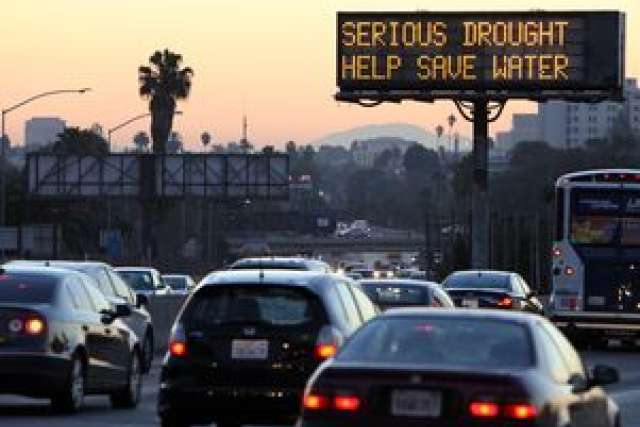In April, California Gov. Jerry Brown issued an executive order asking residents to reduce their water consumption by 20 percent. That hasn’t happened. Since then, the state’s dry conditions have worsened, with more than 80 percent of California now in an extreme drought according to the National Weather Service.
As a result, officials are getting tough on water wasters: The State Water Resources Control Board recently adopted regulations giving local agencies the authority to fine those who waste water up to $500 a day.
But efforts to hit Brown’s target might have unintended, and potentially harmful, consequences for the health of Californians and their communities.
Now a health impact assessment, or HIA, issued by the UCLA Fielding School of Public Health’s Center for Health Advancement provides short- and long-term recommendations for urban water conservation that save water while also protecting and promoting public health. The report was funded by the Health Impact Project, a collaboration of the Robert Wood Johnson Foundation and the Pew Charitable Trusts.
“Sharply increasing the cost of water use for the consumer could impact poorer households,” said Brian Cole, an adjunct assistant professor of environmental sciences at the Fielding School and lead author of the report. “Access to valuable urban park and green space, for example, which already tends to be in short supply in poorer communities, could be lost if cities stop watering public spaces. This is exactly what happened during a recent drought in Australia when delays and insufficient water conservation left some cities no choice but to let their parks turn brown.”
In addition, generating more energy to pump and treat water could increase emissions, which would adversely affect air quality; in some areas, urban heat islands could be worsened if vegetation isn’t sufficiently watered.
Considering long-term climate projections, expected population growth and the projected depletion of water reserves, there is little prospect for relief for urban residents. More restrictions on water use and, eventually, higher prices for water are likely. Both would have especially severe implications for poorer residents who are struggling to make ends meet, especially those who already have cut back on all but the most essential water uses.
“Water conservation is critical to the future of Southern California and the entire state,” Cole said. “It’s inevitable that the severe drought we are in now will repeat itself time and again in the future. It will require institutionalizing inter-government agency cooperation to improve water and energy efficiency, while still supporting economic and health goals.”
Communities and water providers can take action that will minimize the likelihood and severity of across-the-board rate hikes and water rationing but, according to Cole, doing so will require prompt, effective conservation measures. The assessment’s recommendations range from the practical to the novel; Cole noted that some might even be controversial. Some examples:
- Any conservation plan should be based on a “quadruple bottom line”—assessing the amount of water it saves, the amount of greenhouse gas emissions it creates, cost, and impact on local health.
- Make water-efficient toilets, showerheads and faucets a condition of home resale and rental, and consider requiring “water efficiency disclosure statements” as part of home sale transactions. In addition, municipalities and water utilities should provide residential plumbing retrofits—for example, high-efficiency showerheads.
- Expand the use of, and infrastructure for, recycled water. Review and update public health restrictions on recycled water use based on the newest technologies and latest research. Use business and land-use permitting processes to provide incentives for expanding recycled water systems and to bring down the costs of building out recycled water systems.
- Make long-term reductions in water use to avoid crises brought on by the increasing demands of a growing population and shrinking water supplies. Since low-income households tend to have less discretionary water use than higher-income households, draconian water rationing and escalating water prices in response to these shortages will hit these households hardest. “Paradoxically, both water shortages and water conservation have the potential to drive up water rates,” Cole said. “To protect households — especially low-income households that already have low levels of water use from rate increases — water providers should use a tiered pricing system.”
- Provide stronger incentives for water-efficient landscaping. “Irrigation of residential landscapes accounts for over 50 percent of urban water use in California,” Cole said. “Achieving long-term reductions in urban water use will require significant reductions in water used for outdoor landscape irrigation.”
The report calls for careful planning to account for local needs and conditions that can reduce water used for landscape irrigation while maintaining most of the benefits of outdoor vegetation. But financial incentives to reduce outdoor water use should be structured in a way that is not fiscally regressive, Cole said.
Sharona Sokolow, a Fielding School doctoral student, assisted in the report’s preparation. Jonathan Fielding, professor of health policy and management and of pediatrics, was the project’s principal investigator; Richard Jackson, professor of environmental health sciences at the Fielding School, was co-principal investigator.



